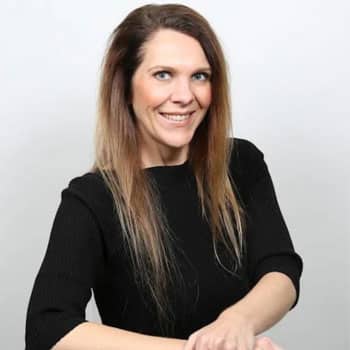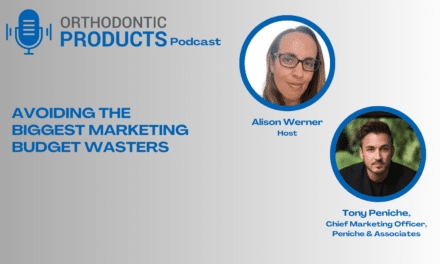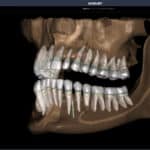Missed or mishandled phone calls can quietly stall orthodontic practice growth; here are practical strategies to align front office operations with marketing efforts and improve patient conversion.
By Amy Stafford
Orthodontic practices are investing more than ever in digital visibility. From targeted ad campaigns to redesigned websites and SEO strategies, there’s a growing commitment to online growth. These efforts matter. But if one essential element isn’t aligned with the rest of the patient journey, it can quietly stall everything, from lead conversion to revenue.
The phone is still the most common final step in the patient decision process. When that call is missed or mishandled, it doesn’t just impact one appointment. It disrupts momentum, erodes trust, and reduces the effectiveness of your entire marketing strategy.
Connecting Marketing to Operational Execution
Across my work with practices nationwide, I frequently assess what new patient callers experience. Time and again, I encounter situations such as:
- Unanswered calls during business hours
- Patients are being routed straight to voicemail
- Long hold times with no follow-up
These aren’t just workflow issues. They are growth leaks that impact patient satisfaction, team morale, and overall production. At a time when practices are trying to grow smarter rather than just harder, tightening the connection between marketing and operations becomes critical.
A well-handled call doesn’t just schedule an exam. It creates a first impression, builds emotional trust, and signals to the patient that your team is organized, welcoming, and ready. Joy isn’t just reserved for the clinical space. It starts with how the phone is answered and continues through every touchpoint that follows.
The Revenue Impact of a Missed Call
To truly understand how high the stakes are, consider these scenarios:
- Wasted Marketing Budget: If your practice is spending $10 to $25 per click on paid campaigns and generating 10 to 20 calls weekly, even a handful of missed calls represents hundreds in wasted investment.
- Lost Revenue: A single new patient call could represent a $4,000 treatment opportunity. Multiply that by several lost leads each week, and you’ll quickly see the impact on your bottom line.
- Lower Conversion Rates: If new patients don’t receive timely, confident communication when they call, your overall conversion percentage drops, making your marketing results look weaker than they are.
- Patient Sentiment and Referrals: A missed or negative first impression over the phone doesn’t just risk a lost lead. It can affect your online reviews, reduce patient referrals, and ultimately diminish your practice’s momentum.
Why This Happens and How to Address It
Most orthodontic teams are not overlooking these calls intentionally. Common root causes include:
- Staffing gaps during peak hours
- Lack of structure or clear responsibility at the front desk
- Phone systems that don’t support modern scheduling flow
- Team members who feel undertrained or uncertain about handling new patient questions
What’s important is recognizing that your phone process is not just an admin function. It is an extension of your patient experience, your culture, and your brand.
Practical Strategies to Realign Your Phone Process
To prevent operational drop-off and support the rest of your growth strategy, consider these steps:
1. Evaluate Your Real-World Experience
Call your practice at various times throughout the week. Listen to what patients hear. Assess tone, professionalism, ease of scheduling, and warmth. Consider mystery calling your competitors as well. Are you meeting or exceeding that standard?
2. Train for Confidence, Not Just Process
Equip your front desk team with tools to feel confident, not just compliant. A call from a prospective patient is not an interruption. It is an opportunity to extend your culture, showcase your values, and invite someone into an experience of care. Scripts should feel conversational, not robotic. Joy and confidence should be part of the greeting.
3. Modernize Your Phone System
Look into tools that support patient experience, not just call routing. Helpful features include:
- Smart call queuing
- Callbacks instead of voicemail
- Voicemail-to-email transcriptions
- Call recordings for consistent training and quality checks
Technology alone won’t solve the issue, but it can enable your team to stay present and responsive, even during high-volume periods.
4. Implement Missed Call Text Backs
Even with the best systems, calls can occasionally be missed. Make sure patients aren’t left hanging. Use automated text-back tools that trigger a friendly message when a call is missed, such as:
“You called. We care. Let’s make something smile-worthy happen and connect. Reply here or tap to schedule your appointment.”
Or,
“We missed your call, but can’t wait to see you smile! Reply here or tap to schedule your appointment.”
These instant responses keep the conversation alive and demonstrate that your practice is attentive and committed to service, even when the phones are busy.
5. Set Internal Performance Benchmarks
Help your team understand what success looks like. Some benchmarks to consider:
- Answering all calls within three rings
- Holding for no more than 60 seconds
- Returning missed calls within one business hour
Make these benchmarks visible and celebrate when they are met. Culture thrives when expectations are clear and small wins are recognized.
6. Integrate Call Tracking with Marketing Reporting
Use tools that show which calls came from which ads or landing pages. Go a step further by connecting that data to outcomes. How many of those calls became starts? What objections were heard? Where are the patterns in timing, tone, or call handling that can be optimized?
7. Offer Chat or AI Assistants as a Support Option
For patients who prefer not to call or who can’t reach you when phones are busy, adding a website chat feature or AI assistant ensures they’re still supported. This approach expands access while preserving the energy of your team.
Bringing Joy and Culture Into the Equation
One of the most overlooked contributors to missed calls and scheduling fatigue is team morale. When front desk staff feel disconnected from outcomes or when culture breaks down under pressure, energy fades. But when teams are empowered, supported, and experience joy in their day-to-day responsibilities, patient experience improves naturally.
You don’t need to overhaul your entire system to create this. Small additions, like celebrating wins during morning huddles or reinforcing purpose in weekly meetings, build culture and consistency that directly benefit production. This is where momentum builds and carries forward into patient conversations, consults, and starts.
Every part of your practice, from the call center to the chairside handoff, should reflect the same level of intention and warmth. That’s how you maintain energy and elevate trust.
The Bottom Line
Orthodontic practices don’t grow from digital strategy alone. True growth happens when every layer of the experience, from the website to the welcome call to the way a question is answered, supports your values and vision.
The front office plays a vital role in this ecosystem. The phone is not just a line to the practice. It is a connection to care. A well-handled call drives trust. It drives starts. And over time, it drives reputation.
By realigning your phone process, empowering your team, and treating each call as a meaningful part of the patient journey, you unlock real operational excellence—and with it, a culture of momentum, clarity, and sustainable growth. OP
Photo: ID 48051333 © Kiosea39 | Dreamstime.com

Amy Stafford, North American director for The Invisible Orthodontist, has dedicated almost 30 years to the orthodontic profession, a journey that began as a part-time summer job and grew into a lifelong passion. Stafford’s career has spanned roles from traveling nationally as a software and team trainer to in-practice positions as a records assistant, clinical assistant, treatment coordinator, marketing director, and leadership positions in management and business development. She was named SureSmile Treatment Coordinator of the Year and earned Disney Customer Experience Certification.










